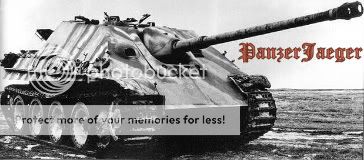I'm going to throw a weird one into the mix and go with the Commonwealth forces of WW1, and not just becuase everyone else seems to forget about them all the time! In the interest of reason I'm going to argue only for the forces available at the beginning and the end of that particular horror-show though.
There were only 5 (???) divisions in the British Army at the dawn of WW1, with Canada, Australia and New Zealand able to supply troops that were in essence homogenous. They were mostly expended (how I hate that term, but it does fit here) by the time of the First Ypres, but by that time even the germans had recognised them as incomparible.
They were a tiny force, therefore mobile and cheap. They were a social revolution in their all-volunteer status. Their technology was first rate, the artillery piece of their day was a positive ion cannon compared to the guns of even 30 years before. (Although the French probably did have the lead there).
Recall that at Mons the BEF comported itself well, actually better than well, it was an army of thoroughbred riflemen against an army still adapting to the lessens of effective infantry firepower. Don't forget that it was able to retreat intact from Mons after the collapse of the French frontier war. With it's equipment mostly intact, and that there was only one mutiny, which was basically overcome by an officer with a toy trumpet if you believe the story (or possibly propaganda in this case).
That army was able to break down into its constituents for movement, and yet still act coherently - at the dawn of radio communcation, a feet the Mongols are often singled out for (admitedly with no radio at all, but their opponents weren't able to lay out telephone lines either).
How about the forces at the end of the war? Well, strange to tell the Commonwealth ran rampant, and started to see a lot of the characteristics of infantry warfare of WW2. Fire-and-movement, and the idea that you really could maneuvre, but only as part of a battlespace managed by officers with a solid awareness of what was going on was largely a Canadian innovation; and one that was made by officers at the front. In the last few weeks of the war British and Canadian troops were storming defenses long considered impenetrable and took more prisoners than everyone else combined.
So we've got:
Solid leadership at the middle level
Ridiculously capable leadership at low level
With the innovation of the field telephone integration of artillery with infantry for vertical integration
With the innovation of moving the machine guns up as part of an assault - a much lower level combined force
Very solid logistics
And dicipline enough to survive actually going to hell and staying there. I'd put the Western Front up as being just as solid as Stalingrad as an example of mans ability to invent gigantic piles of crap to haul himself into. Except that it lasted far longer, and people were throwing poison gas at one another. Also that's where the flamethrower got invented. Also the shotgun with bayonet attached. And the trench-mortar. And tunnelling under your opponent to pretty much build the biggest bomb your technology can allow under him. Then having to fight him underground as he does the same thing right back at you.
Actually stuff it, since they could take that for years, since Canadian troops could still fight after Vimy Ridge, since British troops still fought after Passchendaele and all the other battles around and no one has suggested that they killed large numbers of Belgian civilians they get my vote for their conduct from beginning to end.
I guess the difference here is that the Commonwealth often feels it was dragged into a war it alone couldn't possibly gain from (possibly a bit unfair on the doughboys, but American did gain immeasurably in stature and was able to impose it's peace on a war Britain largely paid for), and that it was 'ordinary blokes' dragged off to fight. They did. They won. But more than that: some of them were even telling jokes in a hell I can't even imagine. By and large they came home and lived blameless lives.
They were just as tough and as powerful as we needed to be, stuck it out for as long as we needed them, and then they went home and rebuilt. If we are trying for any kind of measurement for the quality of an army it surely must be it's value to the country it represents. Since the commonwealth armed forces represented so many countries (let's remember the Indian troops who died, just to name on other forgotten group) and re-inforced the bond between so many of them I can't see how anyone can match the contribution that they made. I hope I have also argued with a measure of success that like everyone else who has ever been ground into meat for his country they paid the full price for that measure of value.





 Reply With Quote
Reply With Quote
 i don't think you can and that's my opinion,
i don't think you can and that's my opinion,






Bookmarks